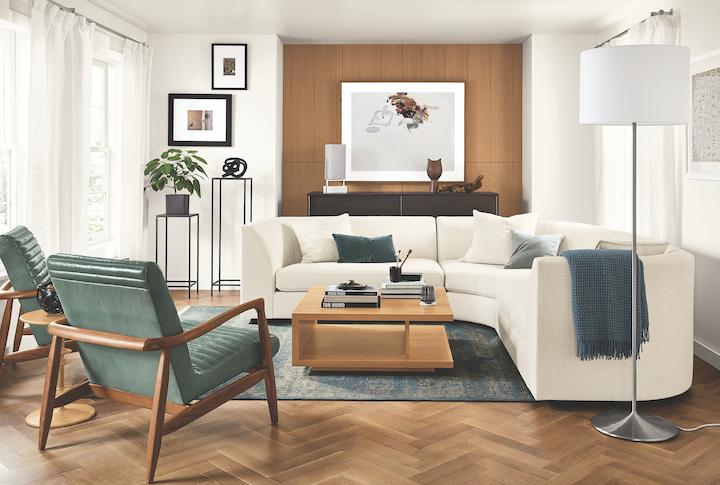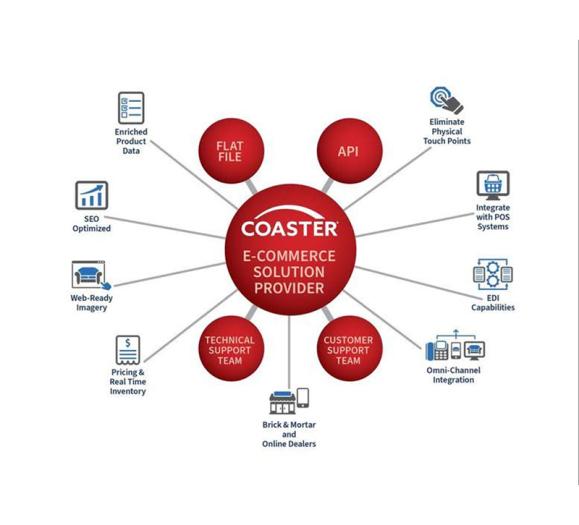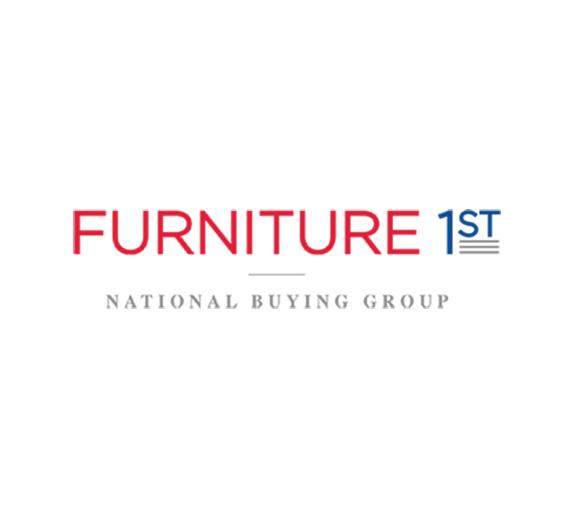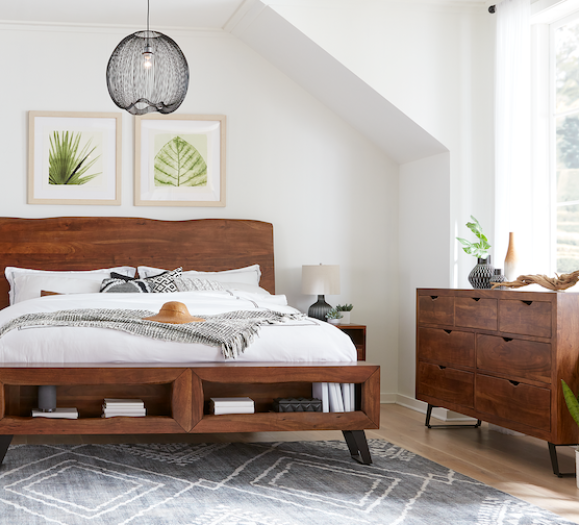At a time when conventional wisdom in the furniture business holds that it is extremely difficult, if not nearly downright impossible, to produce and sell domestically made products at competitive prices, 90 percent of everything Room & Board sells is made in America in family-owned factories, and almost all of the products it sells are exclusive to the company.
The Minneapolis-based retailer with 14 stores across the country (give or take a pop-up or weekend-only outlet) doesn’t just support American craftspeople. Long before protests about raising the minimum wage to $15 began to reach a fever pitch nationwide, the company had established a minimum salary policy, ensuring a livable standard, profit sharing and full benefits for all its staff members, driven by the notion that non-commissioned salespeople keep customers’ best interests in mind.
There’s more. Room & Board is a founding member of the Sustainable Furnishings Council and is focused on sourcing products ethically, planting one to three trees for every one harvested for the making of its furniture. Then, last year, the merchant worked with the USDA Forest Service to pilot the Urban Wood Project, a program that hires the hard-to-employ to reclaim wood from abandoned, condemned homes in the city of Baltimore. Workers were trained to treat and mill the wood used to create furniture sold in the stores, and the land where the homes once stood has been turned into parks and green spaces for the community.
This is the moment when we should mention the merchant’s overall modern bent, a strong merchandising focus for some four decades, which pre-dates the earliest mentions of the term “Mid-Century” in any industry trade publication touting macro trends. Simply put, Room & Board has not only been ahead of the curve, there are parts of its story that suggest it’s not even using the same pot-holed roads on which the rest of the industry rolls.
Along with the stores’ legions of fans, leading business publication Fast Company has recently taken note, naming Room & Board to its Most Innovative Companies List in the retail category this year.
The Long Road Less Traveled
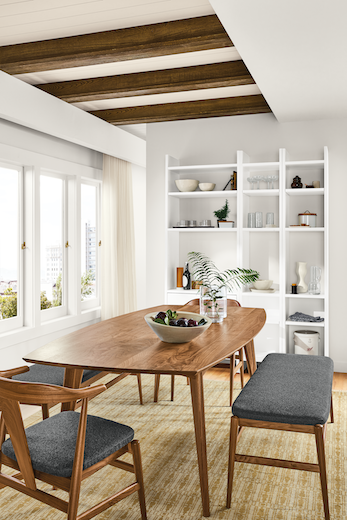
Readers shaking their heads in awe about now may take heart. Room & Board was no overnight sensation. Back in the ‘70s, John Gabbert — who was serving as President of his family’s successful retail business Gabberts Furniture (now a part of HOM Furniture) — “had grown frustrated with the limitations of reselling other brands,” recounts Gene Wilson, Director of Merchandising and Vendor Management at Room & Board. “John believed he could create a brand and his own products and eliminate the layers in the supply chain that didn’t necessarily add value, up to and including the network of sales reps in place to sell those brands. His whole premise was, ‘I want to create a brand that reflects me and my values.’”
“Value” has been a foundational concept at Room & Board from the chain’s inception. “If you’re looking at quality, design and the details that we’re putting into the product — and maybe most importantly the customer service we provide, I would say we are high-end,” Wilson says, despite the fact that a quick scan of the company’s website shows furniture priced in the mid- to better range. “John loved modern design, and he is one for high-end details, but we have always been extremely cognizant of value, and we believe people should be buying products at a fair price.”
At a time when tariffs on Chinese-made goods have sent manufacturers, retailers and suppliers across the industry scrambling, Room & Board appears prescient with entire stores filled with American-made furniture. Gabbert did not initially set out to offer only domestic products. That actually happened because “we found that producing domestically was the best equation for us to deliver the value that we and our customers expect,” Wilson says. “We didn’t have it as a rule, and still do not today, but we always felt that we should buy product wherever it is created most efficiently, and I would argue that it is more efficiently done in the United States. And the reason I would argue that is that we are truly operating as very close partners with our suppliers.”
While this is now a key facet of the company’s culture, getting to such a place wasn’t easy. “Back when John started the company and decided that he was going to create his own brand, how many manufacturers do you think were lining up to break away from the brands they were selling to make private label products for him? There was nobody. So, we had to be resourceful in finding people who do very specific things well. That meant really dialing in and learning the capabilities of all kinds of partners and trying to get the most out of those capabilities based on our creative vision,” says Wilson.
Thirty-nine years later, it’s still not unusual for Room & Board to work backward to create products that play to the vendor’s strengths, “rather than starting from what I think is necessarily the absolute best thing that I need in the assortment,” Wilson relates.
The Secret Sauce
Room & Board does not own any of the factories with which it works, but it does form very close partnerships. Steel, for example, is an important element in many of the company’s designs. “Back in the late ‘80s, John had some ideas for table and bed designs made from steel, a modern material he believed was under-utilized that consumers would find to be quite appealing,” Wilson describes. “There was really nothing like that in the market at the time. He happened to have a contact at a local steel fabricator, Bell Manufacturing, that made security bars and radiator covers, so John and another executive met with them. The gentleman running the company was sort of an artisan himself and was easily able to transfer John’s ideas into products. They hit it off. It was very low volume — I think the factory was about 20,000 square feet then, and I would be surprised if they did more than $100,000 in business that first year. But we quickly got to the point where we were selling a lot of steel and we had to evolve, and frankly, so did Bell Manufacturing.”
According to Wilson, the team then had decisions to make. “Do we just do as much product as Bell Manufacturing can make, or do we do as much product as we want and then go and find other manufacturers? So, we shared our vision of the future with Bell, asking them, ‘What can you do and want do you want to do in the future? Because we need to know so that we can plan.’ Bell took a couple of days to think about it, and then laid out their plan for growth.”
This anecdote about “mutual vision” has been replicated time and again over the years. Wilson elaborates: “It’s a big statement, but we really are in business for four parties. First, we’re in business for our customers, and we’re in business for the health of our team. But we’re also in business for the health of our partners, and of course we want to have a positive impact on the community. This is the fundamental way that we operate, and it really allows us to put our cards on the table, tune into our vendors and plan, and we’re typically planning for five years out. They know exactly what our intentions are. They know exactly what we expect. And we talk a lot about performance.”
All of this is accomplished without contracts in place, with approximately 30 key manufacturers responsible for nearly 90 percent of the volume at Room & Board. “They trust us, we trust them, and we’re always very transparent,” Wilson says. “We have specific plans moving into the future together and we just keep talking about it along the way. It’s worked really beautifully because there’s a mutual buy-in that we both have about what needs to be done to be competitive.”
Obviously, this approach also means that Room & Board is not weighed down with “boatloads of imported inventory in its warehouses,” making the retailer far more nimble financially. “There are a lot of costs related to importing that are sort of off a typical merchant’s books,” the retailer points out. “Inventory levels are definitely one thing that limits profitability.
“The other thing that’s vital is customer service,” he continues. “I want fast turnaround, to be able to get products in three or four weeks, rather than three months. Honestly, customer service was probably as big a factor as any in why we chose to do more business in the United States.”
Sharing the Story
Surprisingly enough, the marketing budget at Room & Board “is very small.” Most likely this is due to the fact that the retailer does not run sales promotions, unusual in the furniture business to say the least. “We’ll run a clearance after we drop a product, but we never run a sale and guarantee our prices for a year,” he notes.
Plus, Wilson says, “We believe that if we treat our customers right, and we deliver what they need with a strong value, they’ll tell our story for us.”
It’s only been in the last decade or so that the retailer actually began emphasizing American-made. “Back in the day, we never shared any of that with the customer. But one year, we thought it would be cool to publish it in the catalog and the feedback we got was overwhelming. The customers related to the messaging about craft and authenticity and buying local.”
It was the same for sustainability. “We recognize that there is plenty more to do, but John’s a nature lover and we’ve always supported organizations like the Nature Conservancy. We really have been working hard to build products with more responsible methods. The forests in the United States are very well managed and in a healthy position, and that’s another great reason to produce in the U.S.” He adds that solid wood is the company’s bread and butter with walnut and white oak considered most important. “We definitely utilize veneers as well, but it all depends on what’s best for the product.”
When the conversation turns to luxury, Wilson says, “I tend to think in terms of character and craft, people being able to get something that really fits them personally and has a great story behind it.”
“The product has to be beautiful, it has to have exceptional details, and it has to have a quality level that will stand the test of time. We like to talk about timeless design from the standpoint of quality, but also whether we’re still going to love this thing 20 years from now. Providing more details, like fabrics that have amazing colors and textures, is something that we’re working hard to get better at.”
As it stands, Room & Board has “eliminated chemicals in all of our fabrics, meaning chemicals that make a fabric stain resistant.” STI, the maker of Revolution performance fabrics, is a key vendor. “We’ve certainly learned a lot from them, and they have learned a lot from us. I think there are a lot of people out there who would not view them as high end, but if you look at what they can create and what it does for the customer, they absolutely are.”
On the subject of customization, a hot button in the age of social media, working with local factories enables Room & Board to offer custom programs in several categories beyond upholstery. “People can get things custom made to their exact dimensions, by the inch, not only in case goods and bookcases, but also in mirrors and rugs. These programs are invaluable and would simply not be impossible if we didn’t have the product made just down the road.” Customized product at Room & Board is available for delivery in as little as three to six weeks. “It takes a tremendous amount of planning,” the executive sums, “but it’s easier with the partnerships we have cultivated.”



